Scotland Performs Update
Scottish Government performance information
Health and Sport Committee
Scorecard
The following National Performance Framework indicators have been selected as relevant to the Health and Sport Committee for the purposes of the Draft Budget Consultation Period.
The report overleaf shows recent performance on these indicators as at 14 December 2017.
The hyperlinks take you to the Scotland Performs website for the latest information on each indicator.
Performance Improving
Improve children’s services
Improve children’s dental health
Improve the quality of healthcare experience
Performance Maintaining
To match average European ( EU15) population growth over the period from 2007 to 2017
Supported by increased healthy life expectancy in Scotland in the period from 2007 to 2017 ( population)
Increase the proportion of young people in learning, training or work
Increase the proportion of babies with a healthy birth weight
Increase the proportion of healthy weight children
Increase physical activity
Improve mental wellbeing
Reduce premature mortality
Improve end of life care
Improve support for people with care needs
Reduce emergency admissions to hospital
Reduce the percentage of adults who smoke
Reduce the number of individuals with problem drug use
Improve people’s perceptions of the quality of public services
Reduce children’s deprivation
Improve access to local greenspace
Increase people’s use of Scotland’s outdoors
Increase the proportion of journeys to work by public or active transport
Performance Worsening
Improve self-assessed general health
Reduce alcohol related hospital admissions
Reduce deaths on Scotland’s roads
Reduce the proportion of individuals living in poverty
Performance Improving
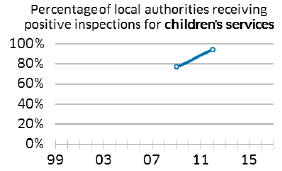
More local authorities received positive evaluations in child protection inspections in the latest period (2009-2012) than in the previous period (2006-2009).
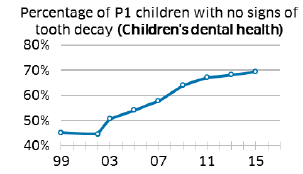
Since 2002/03, there has been a steady increase in the percentage of Primary 1 children with no obvious tooth decay.
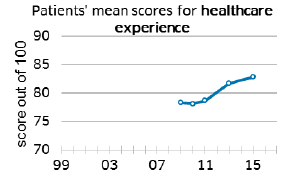
Patient ratings of the quality of their healthcare experience have been improving since 2010/11.
Performance Maintaining
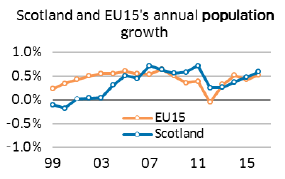
In 2016, the average annual population growth rates since 2007 for Scotland and the EU15 were 0.50% and 0.41% respectively.
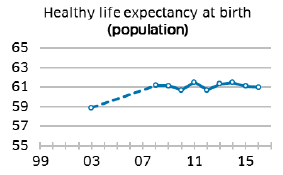
Levels of healthy life expectancy have been gradually increasing since 1980. However, there has been little change since 2008.
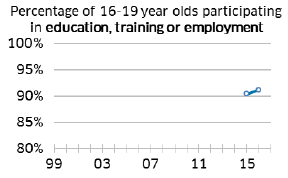
The percentage of 16-19 year olds participating in education, training or employment increased between 2015/16 and 2016/17.
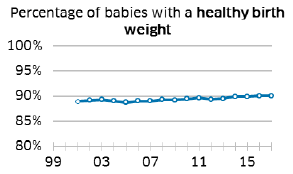
The proportion of babies with a healthy birth weight increased from 88.9% to 90.1% between 2001 and 2017.
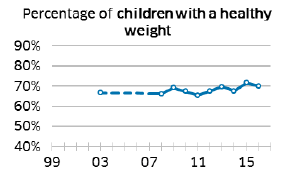
The proportion of healthy weight children has fluctuated around the same general level between 2008 and 2016.
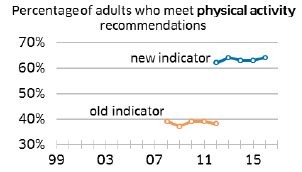
The proportion of adults meeting physical activity guidelines has been stable since 2012. Using the old guidelines, the proportion of adults meeting the recommendations was also stable between 2008 and 2012.
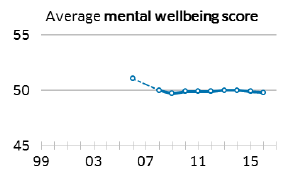
Average adult scores on the Warwick- Edinburgh Mental Wellbeing Scale have remained stable between 2008 and 2016.
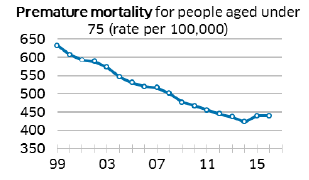
Premature mortality remained stable between 2015 and 2016, following an increase in 2015. Despite this, premature mortality is at its third lowest level over the full time series, having previously decreased year-on-year for every year in recent decades.
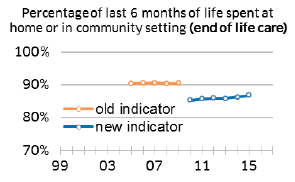
Consistently since 2010/11, just over 85% of the last six months of life have been spent at home or in a community setting. In 2010/11, there was a change to how the indicator was calculated.
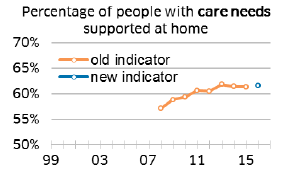
The percentage of people receiving personal care at home, rather than in a care home or hospital, remained stable in 2016.
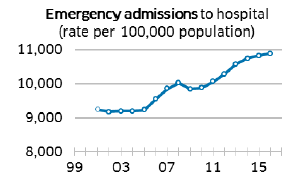
The rate of emergency admissions to hospital remained stable between 2015/16 and 2016/17. This follows a long term upward trend.
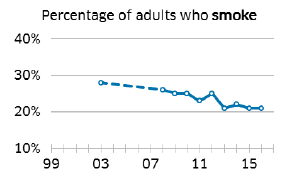
The percentage of people receiving personal care at home, rather than in a care home or hospital, remained stable in 2016.
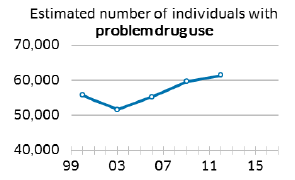
The estimated number of individuals with problem drug use increased between 2006 and 2012 although recent increases are small and not statistically significant.
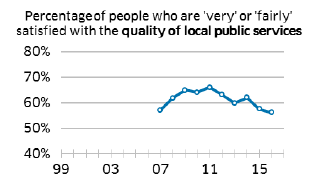
The percentage of people who are 'very' or 'fairly' satisfied with local public services remained stable between 2015 and 2016, having decreased since 2011.
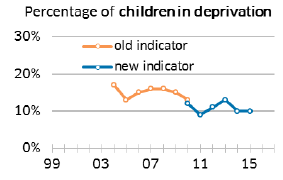
The percentage of children living in material deprivation remained stable between 2014/15 and 2015/16. In 2010/11, there was a change to the questions asked in the survey.
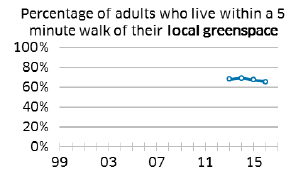
The percentage of adults who live within a five minute walk of their local greenspace remained stable in 2016.
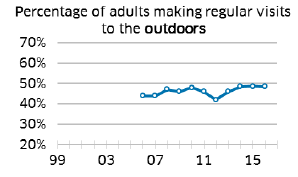
The percentage of adults making at least one weekly visit to the outdoors has fluctuated since 2006, but remained stable in 2016.
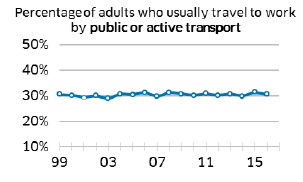
The proportion of adults who usually travel to work by public or active transport has remained stable for the last decade.
Performance Worsening
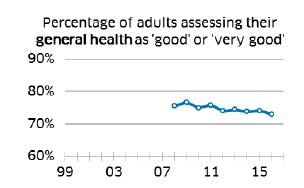
The percentage of adults assessing their health as 'good' or 'very good' declined in 2016.
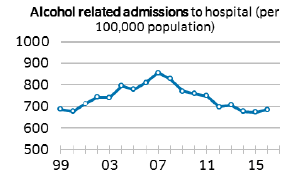
Alcohol related hospital admissions peaked in 2007/08. They then declined by 22% by 2015/16 before increasing in 2016/17.
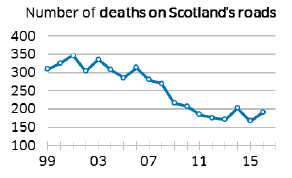
The number of people killed on Scotland’s roads has fluctuated in recent years. However, this continues to follow a long term downward trend.
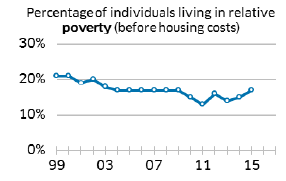
The proportion of people living in relative poverty increased in 2015/16 and has fluctuated since 2009/10.
Contact
There is a problem
Thanks for your feedback